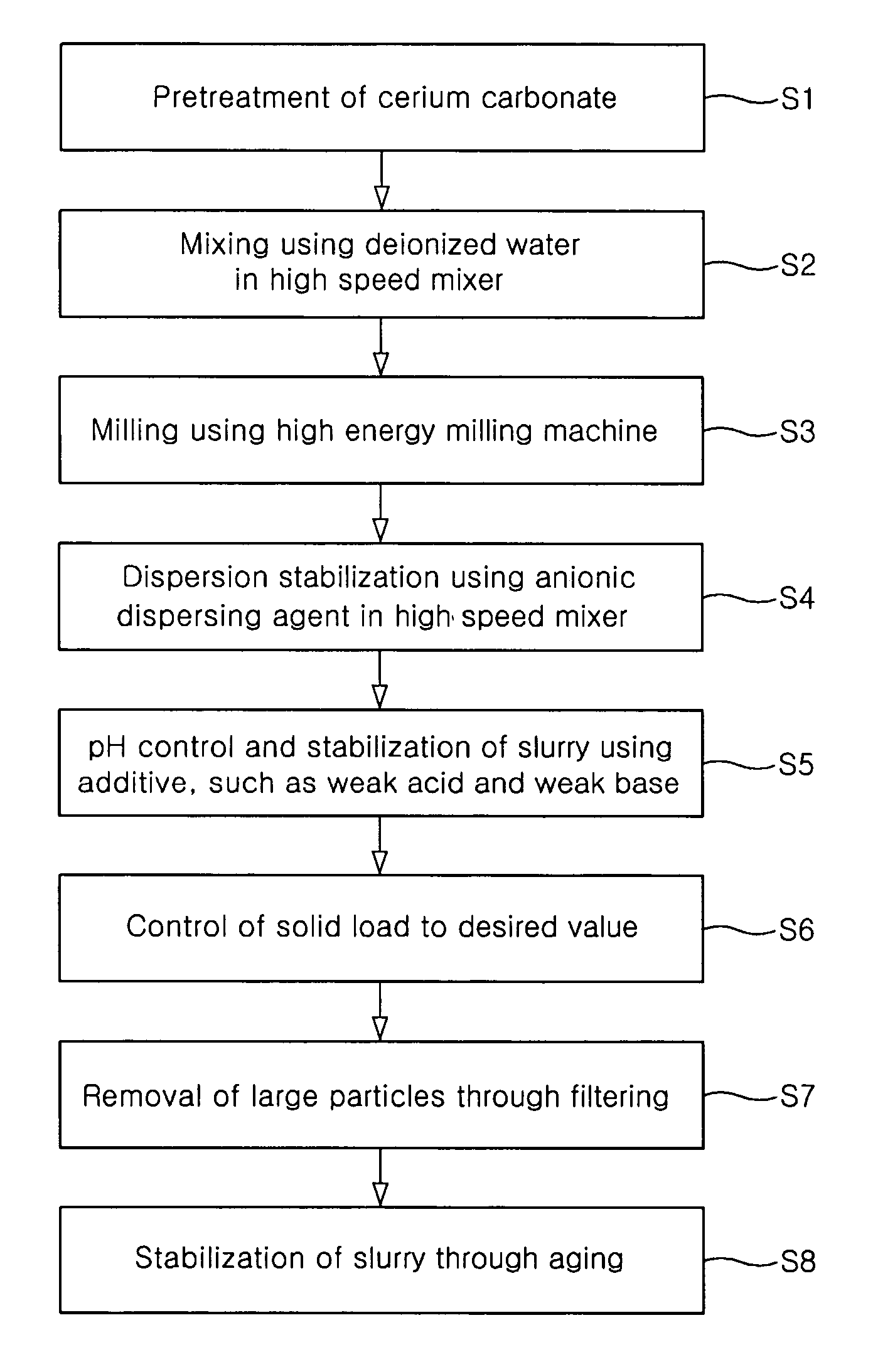Abrasive particles, polishing slurry, and producing method thereof
a technology of polishing slurry and abrasive particles, which is applied in the field of slurry, can solve the problems of reducing the removal speed of the oxide layer, the removal speed of the nitride layer, and the scratching surface of the wafer, and achieve the effect of minimizing micro scratches
- Summary
- Abstract
- Description
- Claims
- Application Information
AI Technical Summary
Benefits of technology
Problems solved by technology
Method used
Image
Examples
Embodiment Construction
[0044] Hereinafter, a process of producing a polishing slurry according to the present invention will be described in detail separately from the analysis of properties of the polishing slurry. Particularly, changes in the properties of the polishing slurry will be analyzed when agglomerates of the raw materials vary in size and when a multi-step calcination process is introduced, in separation. Furthermore, a description will be given of a method of producing the polishing slurry using ceria as a polishing agent, deionized water as a dispersion medium thereof, and an anionic polymer dispersing agent as a dispersing agent. Also, the CMP results, such as oxide film polishing speed and selectivity, depending on process conditions, will be given. Many modifications and variations of the present invention, which will be described later, are possible, and the scope of the present invention is not limited by the following description. [Production of Ceria Slurry]
[0045] The ceria slurry of ...
PUM
 Login to View More
Login to View More Abstract
Description
Claims
Application Information
 Login to View More
Login to View More - R&D
- Intellectual Property
- Life Sciences
- Materials
- Tech Scout
- Unparalleled Data Quality
- Higher Quality Content
- 60% Fewer Hallucinations
Browse by: Latest US Patents, China's latest patents, Technical Efficacy Thesaurus, Application Domain, Technology Topic, Popular Technical Reports.
© 2025 PatSnap. All rights reserved.Legal|Privacy policy|Modern Slavery Act Transparency Statement|Sitemap|About US| Contact US: help@patsnap.com



